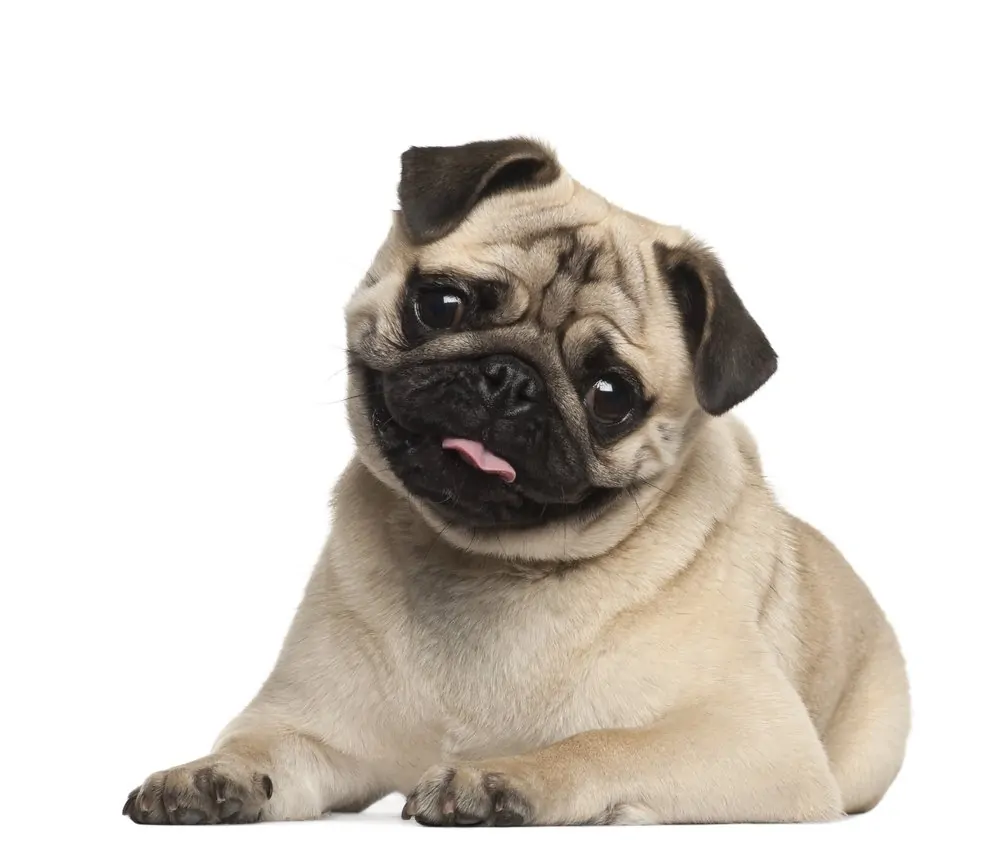Just like any other domesticated animal, there are pros and cons to pugs.
They’ve been beloved canine companions for centuries, with their roots in 8th Century China.
When they hit the European market several hundreds of years later, they instantly hit the rich and noble.
Today, however, even as they remain beloved companions, there is a movement from some activists to ban the breed.
What is it about these lovable pups that made them so immediately popular?
And on the other hand, why are people now pushing to see an end to the breed?
Are they good pets for everyone, or just certain kinds of people?
Let’s examine some pug pros and cons and see if this dog is the right pet for you!
Let’s find out!
Continue Reading or Watch the Video:
The Pros:
1. Small, but Solid:
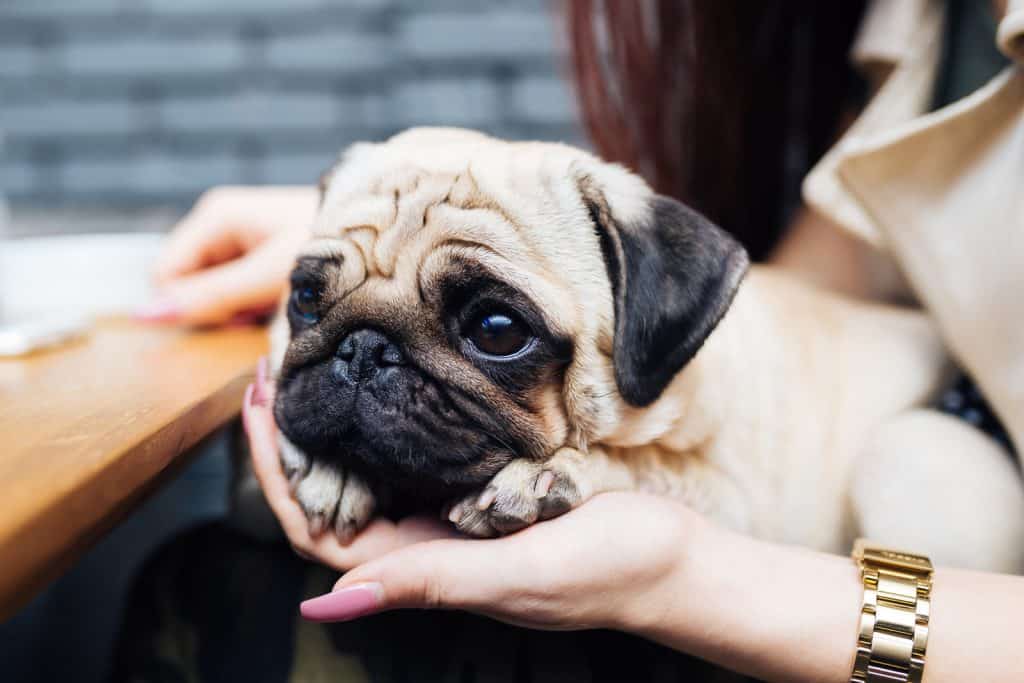
Pugs are well-known as lap warmers.
On average just falling short of a foot tall, pugs are compact enough to be easily carried around in carriers as well as in your arms.
However, for as small as they are, pugs come dense: a healthy pug weighs an average 16 pounds.
Compare that to other lapdogs: the papillon averages out at 9 pounds, the Shih Tzu weighs 5, and a Chihuahua usually comes in at around only 4.5!
If you want a pet that can fit comfortably on your lap but won’t be knocked over by a strong gust of wind, a pug may be the right choice for you.
2. Playful Partners:
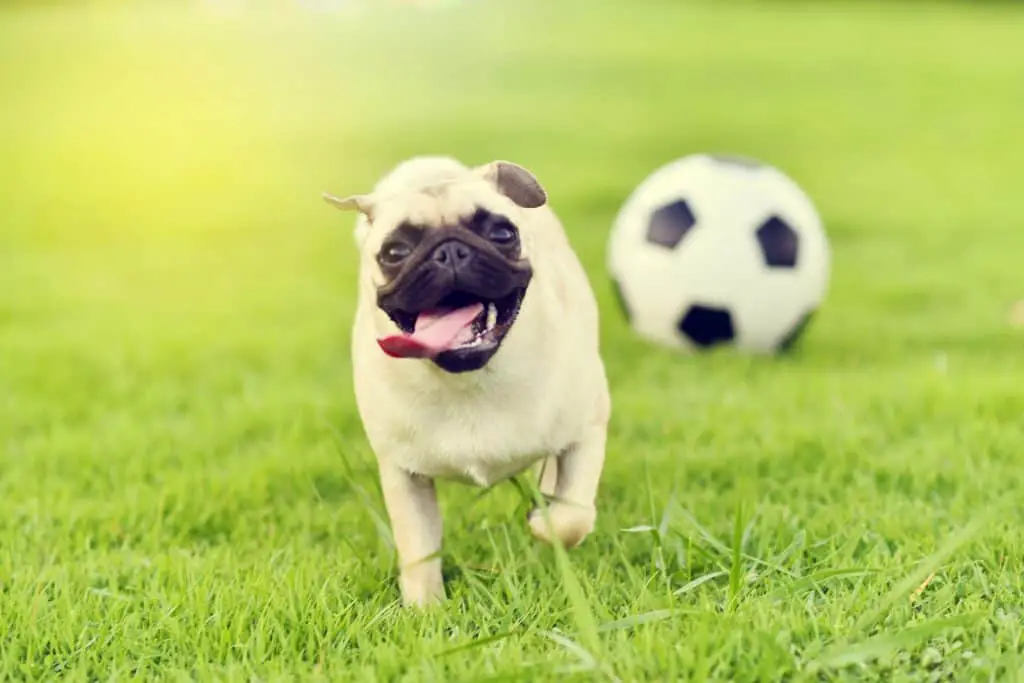
Pugs love to be the center of attention, which makes them endless sources of entertainment.
They will play and exercise with you as much as you please. On the other hand, mellow settings also tend to calm these playful pups down, and if you get tired, they’ll be happy to snuggle up with you for a nap.
As long as your focus is on them, your pug will be content.
3. Compact Friends for Compact Spaces:
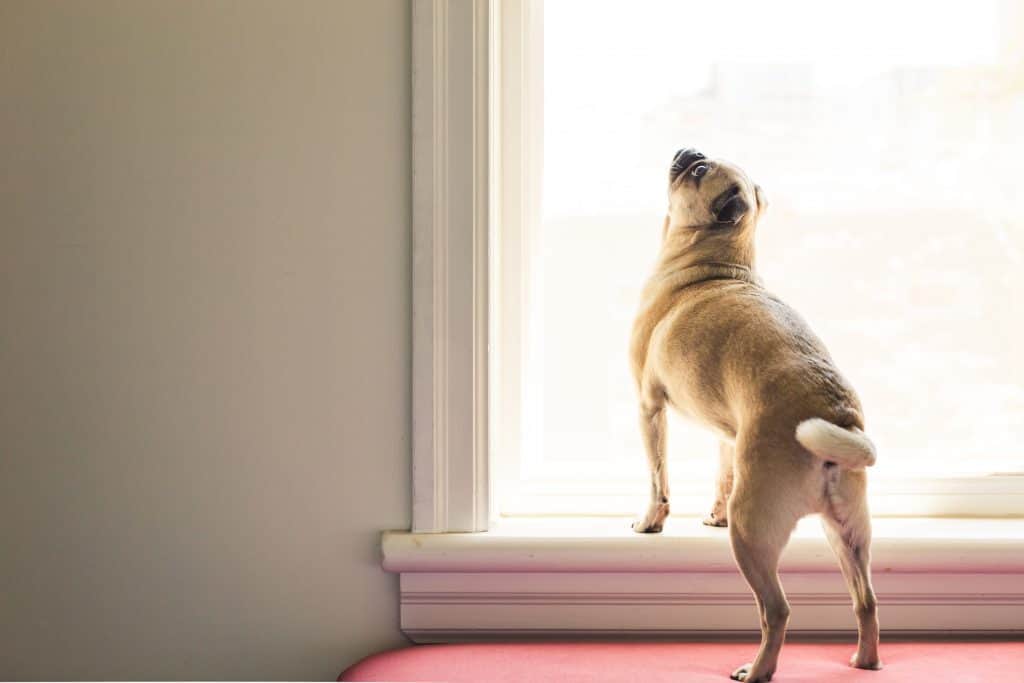
Pugs in a more lethargic dog breed require less physical activity than larger breeds like Chinese Red Dog.
Although they enjoy time outdoors, most pugs are also perfectly content spending their time, for the most part, inside, which means they can happily live in apartments and smaller homes without going stir-crazy.
4. Low Maintenance Grooming:
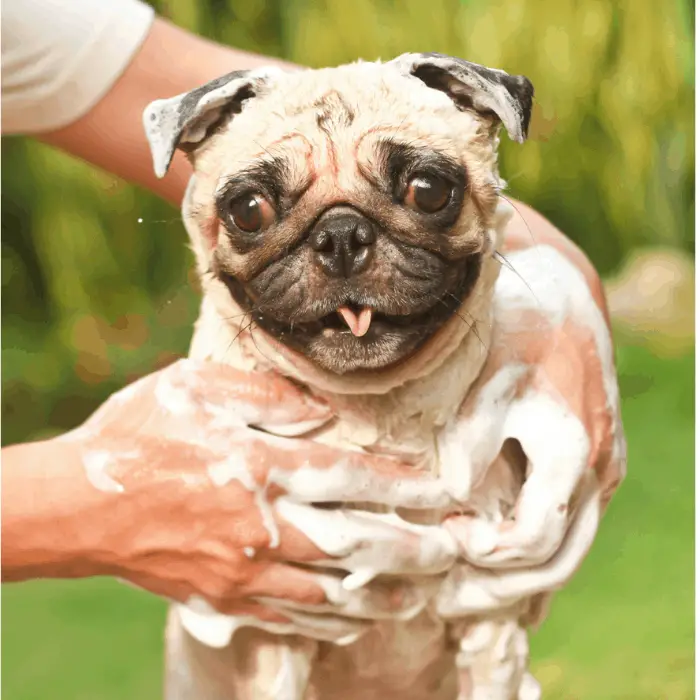
Pugs are shedders, so if you’re looking for a hypoallergenic pet, you’ve come to the wrong place, but taking care of their grooming is pretty simple.
All their short hair coats need to stay healthy and glossy is; a regular brushing once a week to remove old hair and let new strands flourish.
5. Relatively Inexpensive To Buy:
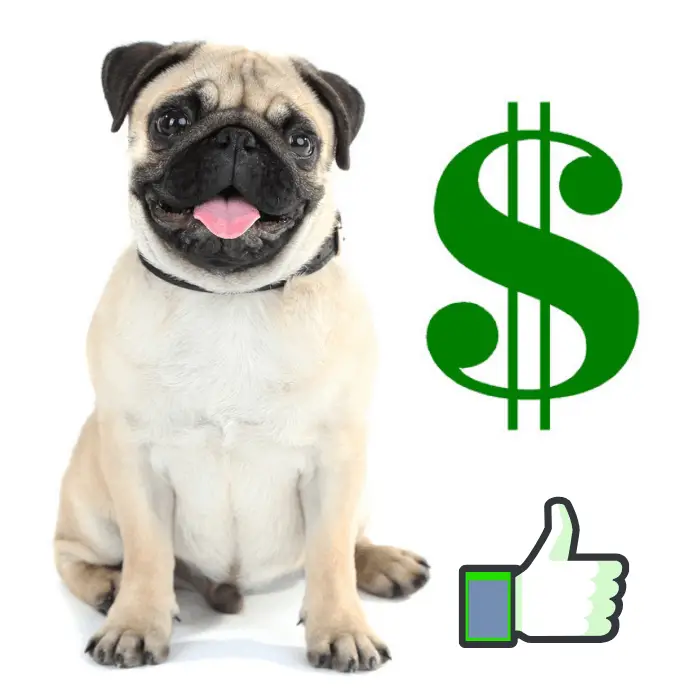
Buying any purebred dog from a breeder is going to be an investment, but compared to other similarly popular breeds, pugs are pretty inexpensive.
It’s rare to find a pug that costs more than $1,200 (The average cost for all Pugs sold is $800 according to nextdaypets.com); compare that to the Cavalier King Charles Spaniel, which sells for an average of $3,500!
6. Good with Kids:
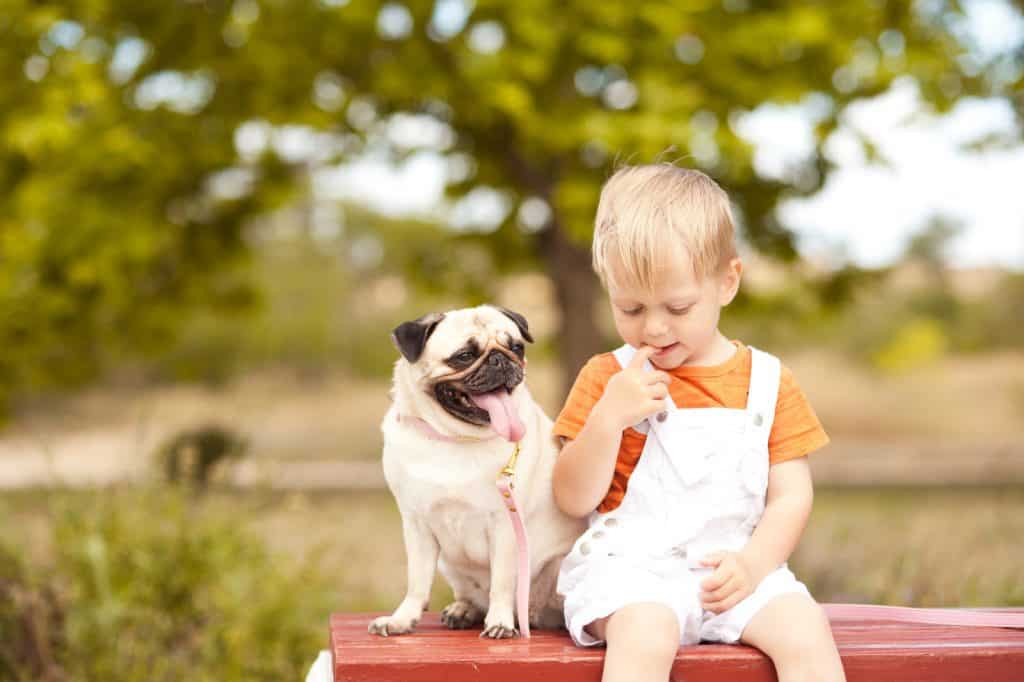
A pug’s small size and affectionate nature make it a great playmate for children of any age.
It takes a lot to make a pug aggressive, which means they’ll tolerate a toddler’s poking and prodding for much longer than most other breeds.
In the rare case that they get upset, their small size and mouth shape make it difficult for them to do any real damage, even when they bite.
7. Noble History:
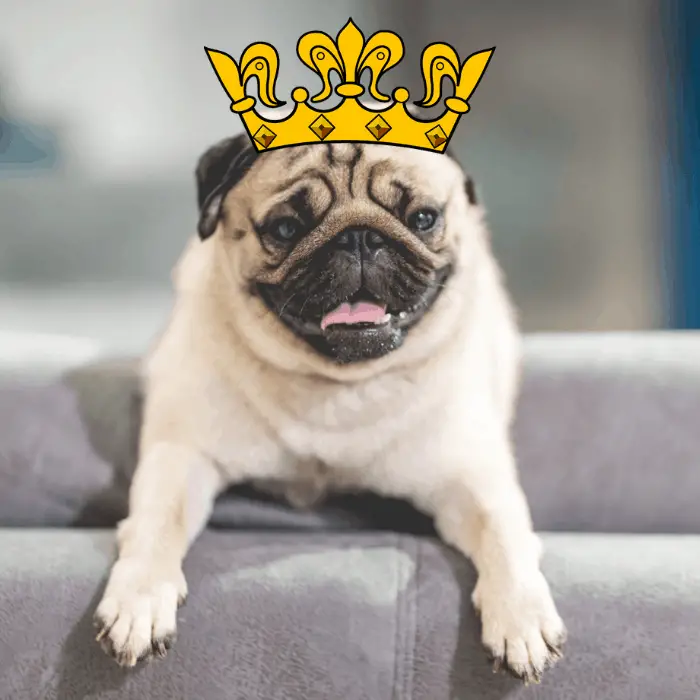
Pugs have been a preferred breed of nobility and royalty for centuries.
In 1572, a pug saved the life of the Prince of Holland’s House of Orange by alerting him to the presence of Spanish invaders and has been the official breed of the House of Orange ever since.
Josephine Bonaparte, Napoleon’s wife, had a beloved pug named Fortune. If a pug is good enough for an emperor, it’s good enough for me!
8. Utterly Unique:

You know a pug when you see one. A distinctive breed like the pug doesn’t survive for centuries without good reason.
A pug is a great choice if you want an immediately recognizable dog.
The Cons
9. Health Issues:
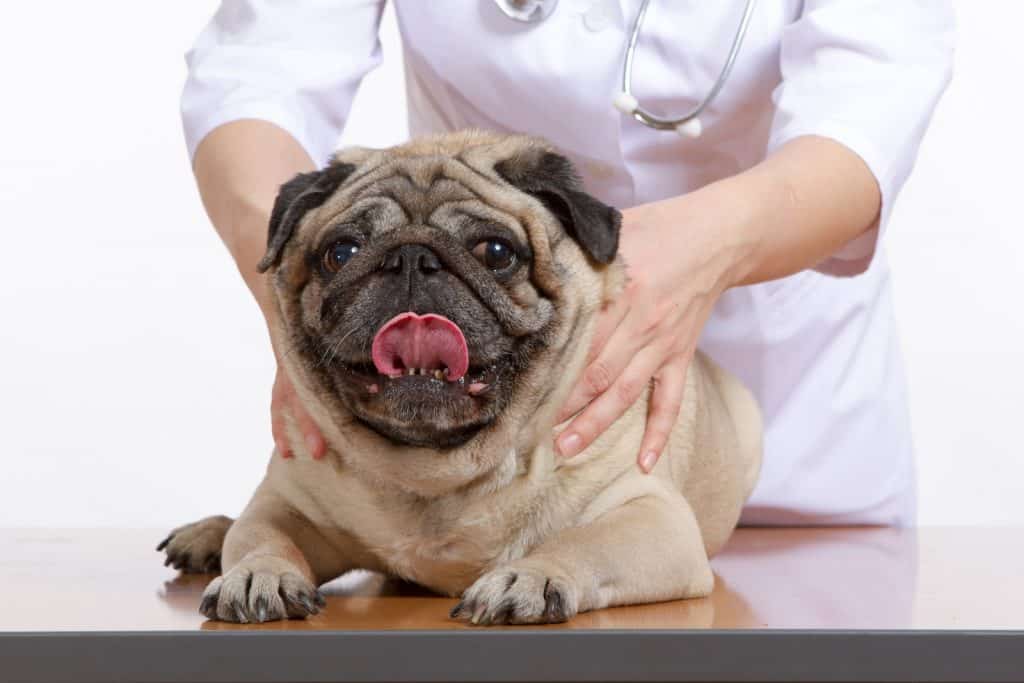
As cute as they are, the selective breeding that has led to the pug’s distinctive look comes with a price: a whole host of health issues.
Check Out The Healthier Version Of this Breed: Retro Pug
Their flattened faces make them brachycephalic, which means an excess of soft tissues blocks their windpipes.
Because of their restricted airflows, even light exercise can leave some pugs panting for breath.
Their big, bulging eyes are prone to injury and infection—their uniquely wrinkled skin traps moisture and grime, which can pave the way to skin infections.
Although not very large, a pug’s dense body can still strain its short legs and lead to knee problems.
The hereditary health issues pugs face have led some activists to call for the banning of the breed, although the movement has yet to gain much traction.
Today, most pugs live perfectly healthy lives, but it’s good to be aware of their common health issues and the extra mile you may have to go to care for one.
10. Emotionally Needy:
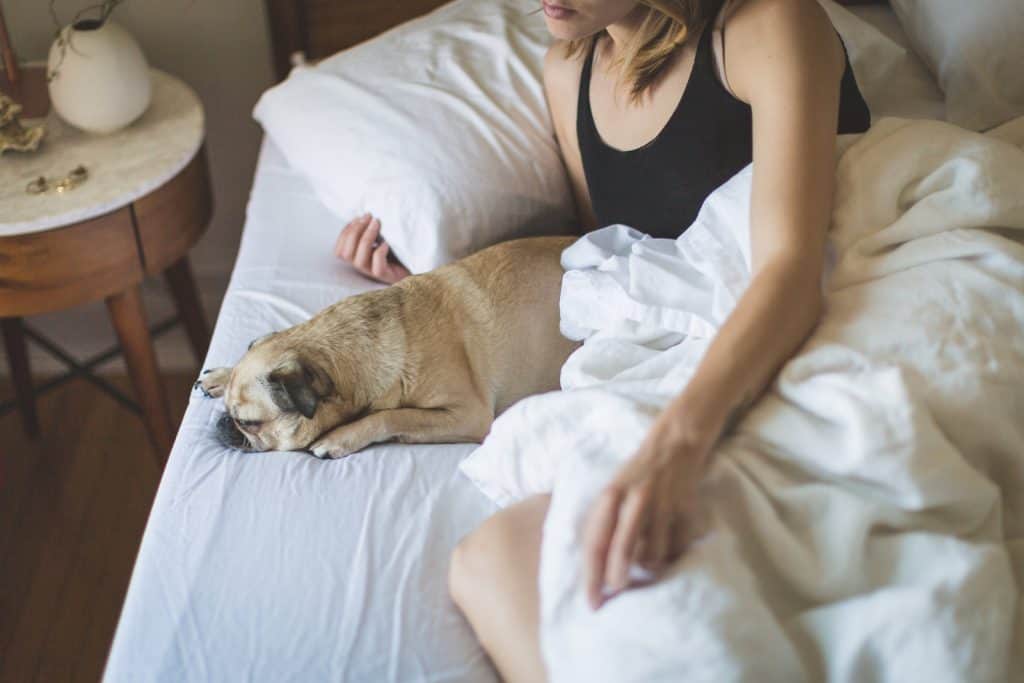
The same desire to be the center of attention that makes pugs so much fun to play with can also be a source of frustration for owners.
Some owners need a break from paying attention to their pets 24/7, but pugs seldom offer such a reprieve.
Their ways of getting your attention may range from annoying—like nudging and licking you when you’re trying to rest—to destructive—like scratching up furniture.
11. Slow to Housebreak:
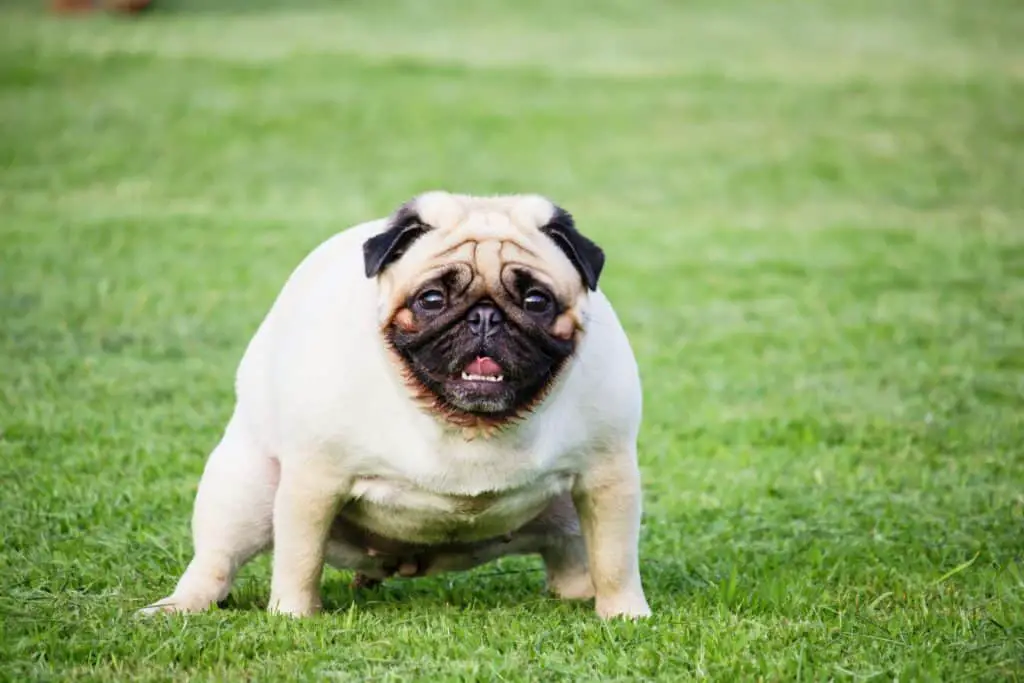
Like any other breed of dog, pugs can be trained to use the bathroom only while outside—but it takes more time and energy to train them to do so than other breeds of dog.
You should expect it to take at least six months—and possibly more than a year—to train a pug to use the bathroom on walks or while in the yard.
Even when trained, pugs don’t tend to notify their owners when they need to go, so there’s a chance of accidents in the house semi-regularly for a pug’s entire life.
12. Lethargic:
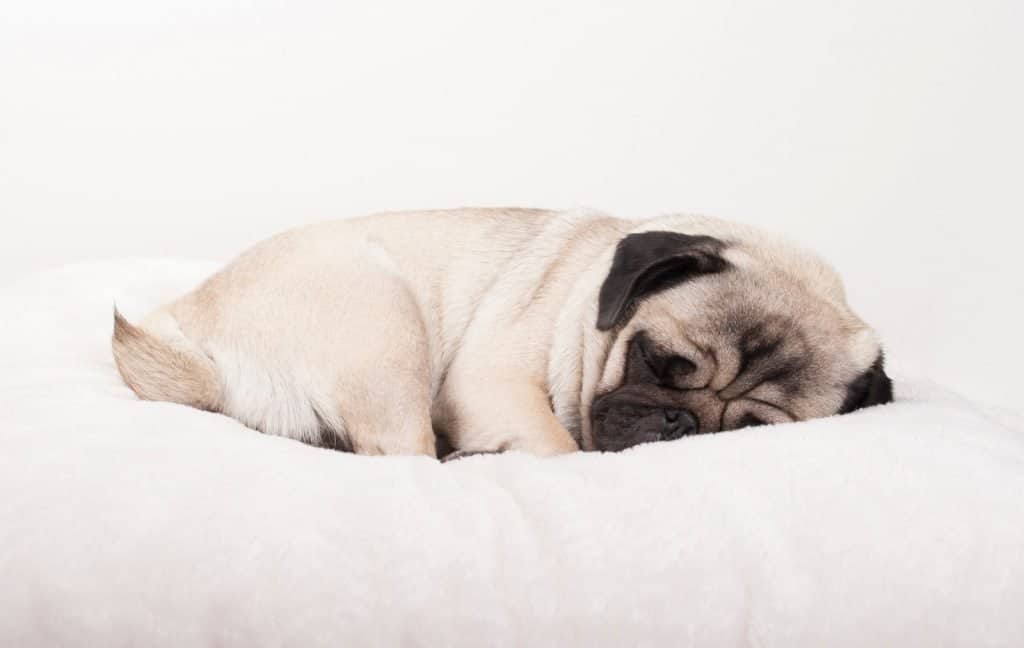
The pug may not be for you if you’re looking for a high-energy pet.
Their physical health issues mean that there’s only so much physical activity they can engage in before they exhaust themselves. They’re more likely to be found napping than playing fetch, especially if they can snuggle up to their owners.
13. Stubborn:
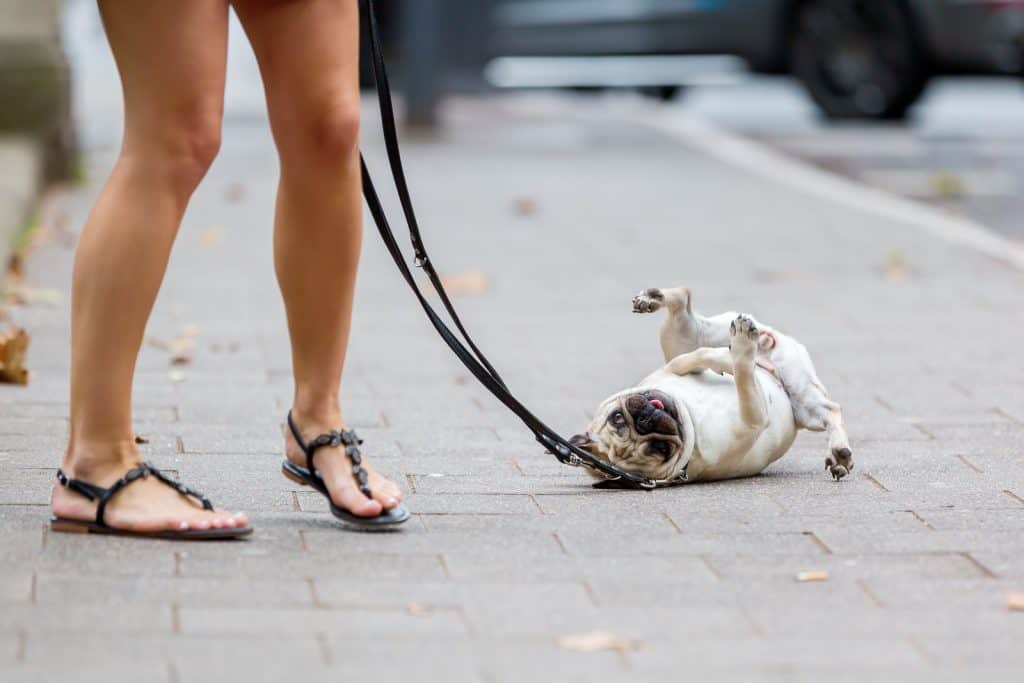
Potty training isn’t the only skill pugs are slow to pick up on. A notoriously stubborn breed, pugs resist obedience and skills training.
A rare few have what it takes to be show and competition dogs, but the vast majority don’t take well to commands.
As lap dogs, pugs are still easy enough to manage even without training but don’t expect your pug to roll over on demand.
14. Shedding:
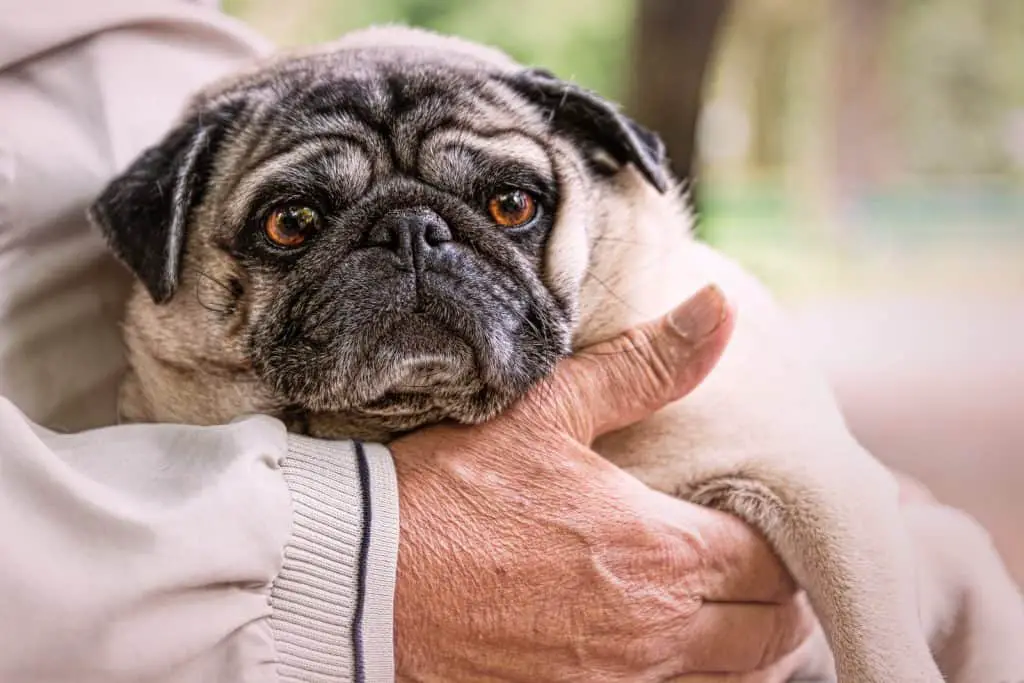
Grooming a pug may be a simple task, but it needs to be done regularly.
Pugs are shedders, and removing dead hair is an easy but time-consuming duty.
Pugs love to be brushed, so they’ll be happy to sit still for you as you groom them, but a weekly grooming session can take upwards of 45 minutes.
15. Quick to Overheat:
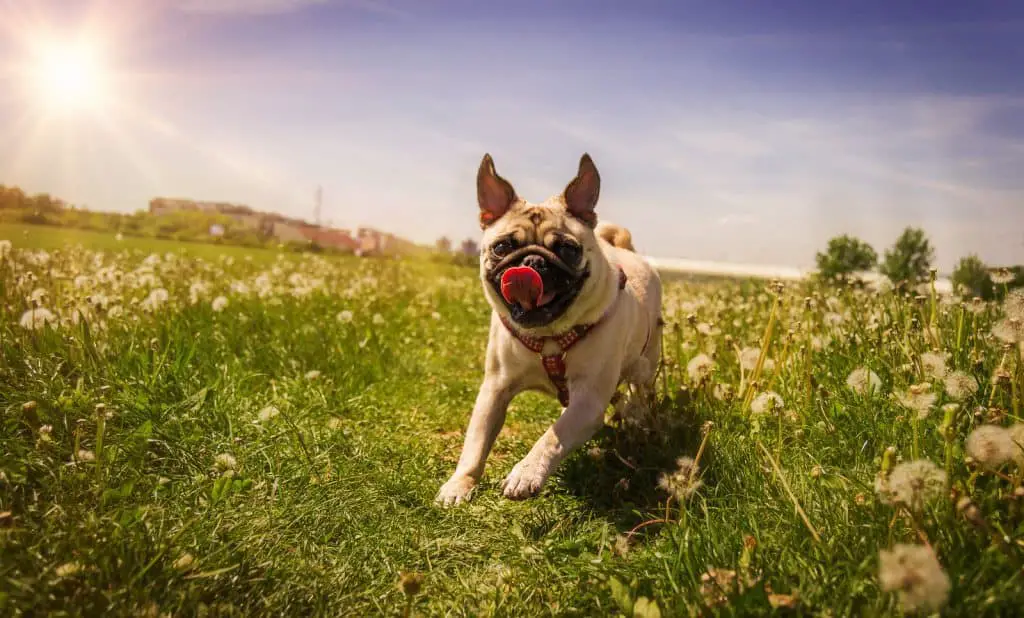
Pugs do very poorly in hot weather. Even temperate climates can pose challenges to these quick-to-overheat pups.
If you live in hot and tropical areas, you must keep your pug out of the sun and cool. Failure to do so may result in a stroke!
16. Snorer:
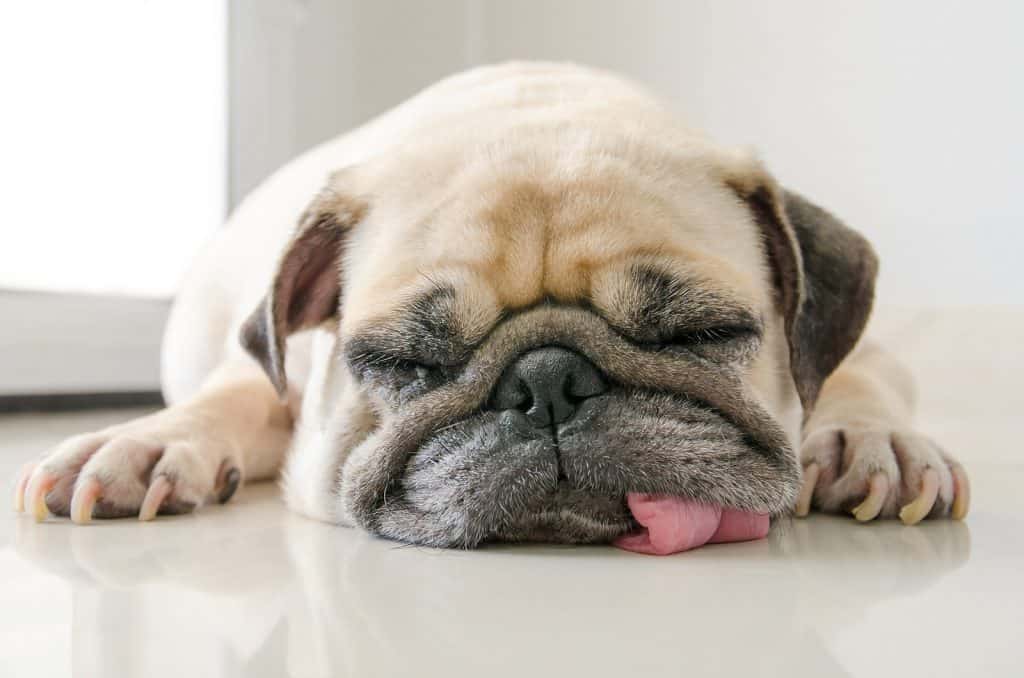
Part of being brachycephalic means being a snorer. If pugs have restricted breathing while awake, that goes double for when they’re asleep.
Some owners may not mind the noise. Many find it quite charming—but if you’re a light sleeper, you may find your pug keeping you up at night.
17. Prone to Obesity:
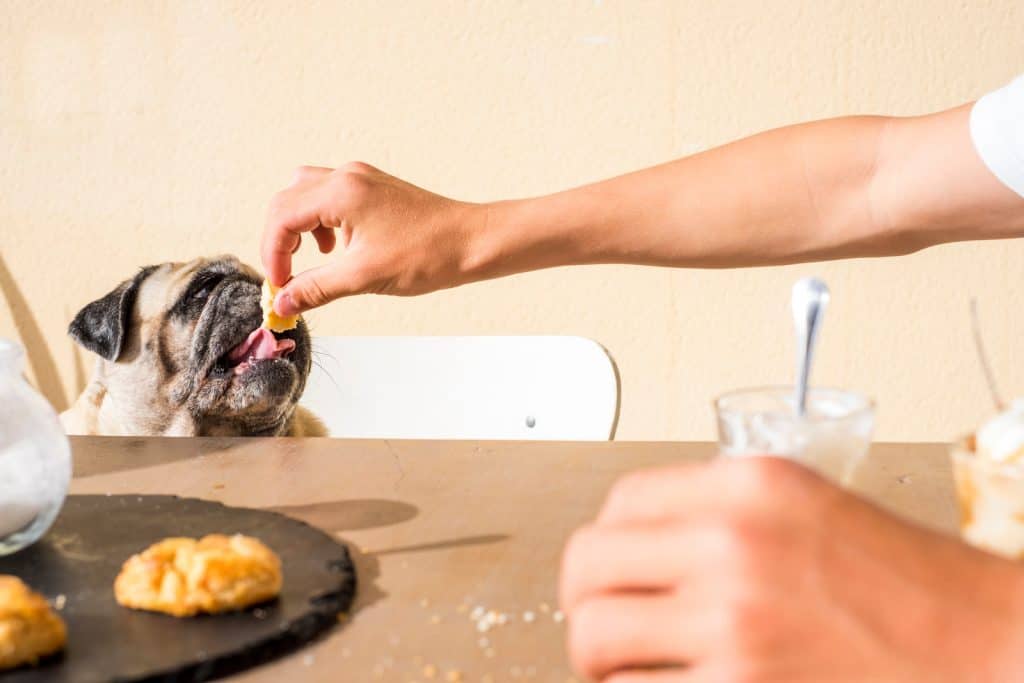
Any dog indulges in an unhealthy diet—especially one that includes a lot of human food—will risk obesity. Still, pugs’ slow metabolism and sedentary habits mean they’re even less likely than other dogs to burn that extra fat.
Conclusion:
Okay, so let’s review!
On the one hand, pugs can certainly come with their share of problems:
- they shed
- they’re prone to health issues
- they’re almost impossible to train
- they’ll never leave you alone
On the other hand:
- They are some of the sweetest and most companionable dogs you can find.
- they love owners unconditionally
- they’re fun to play with
- they’re great with kids
- they’re easy to care for
Without a doubt, owning a pug is a commitment, but if you have it in yourself to dedicate your time to your dog, it can be a constant companion, a source of love and comfort, and, yes, a great pet.


